Agricultural data analysis: digital transformation for sustainable agriculture


What is agricultural data analysis?
Agricultural data analysis is the process of collecting and analyzing data related to agriculture using advanced technologies such as Internet of Things (IoT), Artificial Intelligence (AI), and Big Data analysis. This analysis aims to improve agricultural operations, increase productivity, reduce costs, and enhance sustainability.
Customize your data
Your data is your strength. This botanist respects, ensuring the safe handling of your farm's data while unlocking the real possibilities it holds.
Special agricultural data
Explore the unique insights of private farming data. Botanist helps you uncover hidden patterns and trends, leading to Intelligent, Data-Driven Agriculture.
Multi-mode visibility and interface
Plantworld boasts a flexible multi-mode interface designed to adapt to your distinctive farming environment. This system embraces a range of media types, including not only text, but also photos, videos, and possibly more in the future.

The process of the agricultural specialist
Using advanced agronomist principles and incorporating the latest artificial intelligence technologies, Botanist is revolutionizing the farming process-delivering superior results for a sustainable future.
Live broadcast of Agriculture data
Take advantage of real-time agricultural insights with live plantworld data streaming, providing a dynamic and data-driven advantage to your farming decisions.
Enhanced learning data from botanist users
User-enhanced learning is constantly evolving with you. He reads your input, improves his experience, reinforcing predictions and recommendations.
The importance of analyzing agricultural data
- Increase productivityBy analyzing soil, weather, and water data, farmers can improve planting timing and use resources more efficiently, leading to increased productivity.
- Saving resources: Data analysis helps optimize the use of resources such as water and fertilizers, reducing waste and costs.
- Improving crop health: Diseases and pests can be detected in their early stages thanks to accurate data, which helps reduce losses and increase crop quality.
- Informed decisions: Data and analytics provide valuable insights that help farmers make informed decisions about farming, increasing effectiveness and efficiency.
How to collect agricultural data
- Smart sensors: Used to measure various environmental factors such as humidity, temperature, and light levels. These sensors provide accurate and continuous data.
- Satellites and drones: Provides high-resolution images of farms, which helps monitor crop growth and detect problems early.
- Portable technologies: Such as smartphones and tablets that can be used to record field data and provide instant guidance to farmers.
Steps to analyze agricultural data
- Data collectionThe process begins by collecting data from various sources, including sensors, satellites, drones, and agricultural records.
- Data cleaningData is cleaned to ensure accuracy and error-free.
- Data analysis: Artificial intelligence and big data analysis techniques are used to extract patterns and insights from data.
- Interpretation and report: Results are interpreted and presented in clear, simple reports that help farmers make informed decisions.
- Practical application: Recommendations from the analysis are applied to agricultural operations to achieve tangible improvements.
Agricultural data analysis applications
- Crop management: Improving the timing of planting and harvesting, and determining the best agricultural practices for each type of crop.
- Smart irrigation systems: Providing water efficiently by analyzing weather and soil data to accurately determine the amounts of water required.
- Crop nutrition: Analyze soil and nutrient needs to provide accurate recommendations about fertilizer use.
- Pest and disease control: Early detection of epidemics and pests through data analysis, allowing effective preventive measures to be taken.
- Farm managementChallenges and solutions
Challenges and solutions
- Data quality: The data may be inaccurate or incomplete. This is addressed through data cleaning and verification techniques.
- Technology cost: The cost of advanced technology is a barrier for some farmers. This can be overcome through government support and public-private partnerships.
- Education and training: Farmers need to understand how to use and analyze data. Training and education programs provide the support needed to achieve this.
Join the smart farming revolution today!
If you would like to learn more about how to apply data analysis on your farm and make the most of the available resources, do not hesitate to contact us. We are here to support you and provide technical and technical advice to achieve the best agricultural results.



